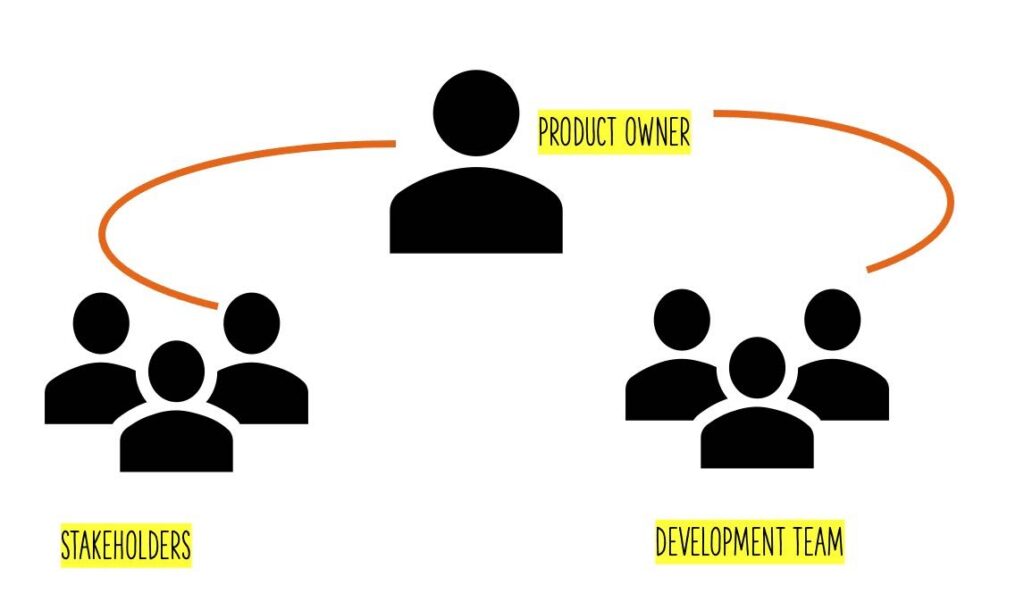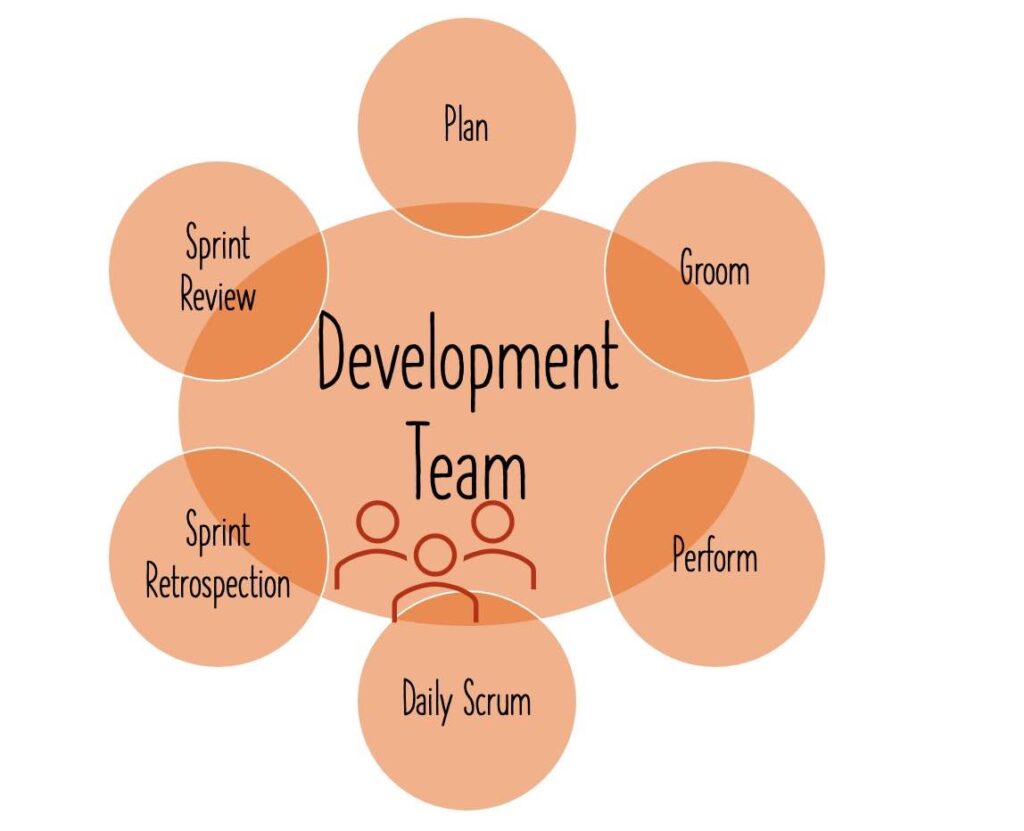A scrum team is a group of members which focus on a specific work to be completed within a specified time-boxed interval.
Table of Contents:-
Elements of a Scrum Team #
The scrum team we all know is an essential asset of scrum organization.
Scrum teams are cross-functional, diverse, and self-sufficient to complete the potentially shippable deliverables for end-to-end customers.
Elements of a scrum team:
There are three main components of a scrum team
- Scrum Master
- Development Team
- Product Owner
Let us talk about each of these and their roles and responsibilities.
Scrum Master #
Scrum Master is a servant leader. The scrum master is the one who leads the team but cannot force things on them. A scrum master guides the team, including the product owner, with agile principles and practices. A scrum master helps everyone to get the work completed on time and with quality. Scrum Master is also a team coach.
Other responsibilities of a scrum master include providing the process leadership, which eventually helps the team and the organization grow and improve in terms of productivity and performance.
Scrum-Master works to make the team independent in the fullness of time.

Scrum Team: Scrum Master
Key Responsibilities:
- Resolve Impediments.
- Conflict Resolution.
- Process Leadership.
- Facilitating Scrum Ceremonies.
- Co-ordination.
- Ensuring Quality.
- Shielding Team from External Interference.
- Coaching the Team.
- Assist Product owner.
- Help the Team Grow.
Product Owner #
The product owner is one of the scrum team’s roles, which is very important and has many responsibilities. Sometimes, a product owner has too much in his plate, which is impossible to accomplish for a single person.
The product owner looks into a minimum of two directions at the same time. The product owner needs to attend to the needs and priorities of the organizational stakeholders, customers, and users. He should interact with them to have a good understanding of the requirements with the changing market demands.
Simultaneously the product owner must work with the development team to communicate with them on what has to be developed and in which order.
A product owner also ensures that all the user stories have an acceptance criteria. A product owner must provide the team with high-level test cases. Decision-making is also an essential part of a product owners’ job where he/she decides if the feature should be considered complete. We can even say that a product owner’s responsibilities include the traits of both a business analyst and a tester.

Scrum Team: Product Owner
Key Responsibilities:
- Manage the Economics.
- Participate in Planning.
- Product Backlog Grooming.
- Team Collaboration.
- Collaborate with Stakeholders, including the Customers and Users of the Product.
- Communicate the Vision to the Team.
- Define the Acceptance Criteria.
- Approve the Sprint Deliverables.
- Provide High-Level Test Cases to the Scrum Team.
- Understand the Requirements and Communicate to the Team.
Development Team #
The scrum development team collects people with cross-functional roles like programmer, tester, database administrator, UI designer, etc. The scrum team does not have these roles defined for any individual. The scrum development team must do all its work to produce the sprint deliverables, which are complete and ready to be shipped, including design, development, integration, and testing. A scrum development team also has to groom their stories so that they are easier to be planned and worked.
A scrum development team is not similar to a traditional team where the team members’ primary focus is to complete their assigned tasks. A scrum development team holds much more responsibilities, like making the sprint successful, planning, learning from the past, and growing every day.

Scrum Team: Development Team
Key Responsibilities:
- Working end to end on the Sprint Deliverables.
- Execution of Sprint, including Self -Organization, Daily Planning, and Communication.
- Performing all Scrum Ceremonies.
- Grooming Product Backlog.
- Sprint Planning.
- Inspect and Adapt the Product and Processes.
For a scrum organization, scrum teams are essential assets that significantly affect an organization's success. Good Luck!!